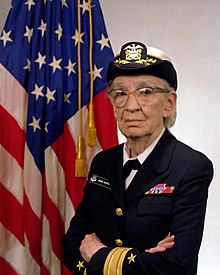Looks can be deceiving. Despite the stereotypes, IT, computing and engineering have never been totally male-dominated realms. There have been many truly dedicated and innovative men and women in IT throughout history who have innovated and shaped the technology that drives our modern world and ways of working.
In recognition of International Women’s Day today, featured here are just a few of the perhaps lesser known “mothers of invention” throughout IT history who, had they had access to modern-day social media and industry platforms, certainly would have become the household names that Bill Gates or Sheryl Sandberg are today.
Hedy Lamarr (1914 – 2000) – Wireless Wonder

An Austrian born American actress during Hollywood’s Golden Age conceptualized the idea of frequency hopping: key to the invention of spread-spectrum technology. Wanting to contribute to the war effort, Lamarr together with composer George Antheil designed a radio guidance system for radio-controlled torpedos that was based on the way a piano roll works. Their idea involved the sending on continuously changing radio signals to the torpedos to prevent them from being jammed and directed off-course. Although patented in 1942, her idea was not adopted by the military until the 1960s, but it is this design that is a key element behind today’s wireless technology, including CDMA, Bluetooth and Wi-Fi.
Grace Hopper (1906 – 1992) – Programming Pacesetter

Rear Admiral in the US Navy, “Amazing Grace” was also a senior mathematician who first suggested a new programming language be developed based on English language words. She believed plain-English programming would attract more programmers – and it certainly did. Until this point computers only spoke in binary or machine code which was largely unreadable. She is most well-known for heading up the development of the Common Business-Oriented Language (COBOL), which was based on the FLOW-MATIC language that she designed back in 1958 and inspired a whole-new era of programming and a generation of programmers.
(1817- 1852) – Computing Soothsayer

An English mathematician who worked on Charles Babbages’s proposed mechanical general-purpose computer, the Analytical Engine. Although the engine itself was never realised, Lovelace reportedly developed and documented the first-ever algorithm for computation on the Analytical Engine, and also described the potential she saw for computer applications beyond simple math and number crunching. Remember that this was before any device had actually been produced and more importantly, it was in the early 1800s. Her work paved the way for much-later thinking about computing applications and software.
Due recognition today of the many female visionaries over time and today that have game-changed computing and technology and paved the way for generations of both male and female tech, IT and business innovators.
Read more great articles on the Maxsum Blog:
Digital Fatigue – Has your business lost its digital drive? | Pushing the Boundaries of Digital Transformation | Do You Understand the Phishing Threat?


